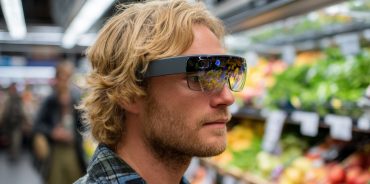Five loyalty and personalisation trends that will shape the year ahead
It’s that time of year again, so, let’s take a look at five potential loyalty and personalisation trends for 2026 courtesy of Ben Snowman, Global Head of Loyalty and Personalisation, dunnhumby.
Loyalty programmes are the antidote to “discount apathy”
The industry-wide push to deliver on the universal desire of customers for discounts has created a world in which the majority of retail loyalty programmes look the same. As a result, customers can flit between those schemes with little sense of meaningful difference.
In 2026, this lack of distinction will be harder to sustain. Economic pressure persists, and discounts alone won’t keep customers engaged. Retailers will need to step back and re-examine what their programmes stand for; loyalty will need to be cemented as an extension of brand strategy, more than just a tool or tactic.
This shift will encourage a more thoughtful mix of programme features. Some brands will lean into community and experience. Others will rethink how member pricing works. A few will move away from blanket offers and focus on more distinctive propositions – ones that really align with what their brand represents.
The message is clear: loyalty can’t stay on autopilot. Retailers will need to build something that feels intentional, not interchangeable.
Personalised loyalty becomes the new standard across apps, stores, and touchpoints
Going into 2026, make sure you know this phrase: “continuous relevant customer engagement”. What does it mean? That loyalty is moving from a programme to a relationship – and that retailers are beginning to reconnect with what loyalty is supposed to be: continuous engagement that goes beyond just programme mechanics.
To make this a reality, personalisation and loyalty will be even more tightly knit in 2026. We’ll see more personalised benefits and rewards inside loyalty apps, alongside tailored content, journeys, and recommendations. In-store screens and devices will be increasingly used to personalise the experience, flexing based on customers’ entire shopping patterns, not just one retailer’s data.
This won’t be limited to offers and coupons. It will shape how customers are engaged across digital and physical environments. Loyalty will become something customers feel across the entire journey – not just in an app message every Thursday.
Making the most of what you’ve built: has loyalty gotten lazy?
Behind the scenes, retailers have been making rapid progress building out their loyalty infrastructures. They’ve invested heavily into first-party data, Customer Data Platforms, identity, and analytics. That work has created strong foundations. And in 2026, the effort spent on building those foundations will start to pay off.
Native AI inside marketing and personalisation platforms will help retailers streamline and automate decisions, shortening workflows and serving more relevant messages. AI agents will begin to assist with low-code journeys and campaign optimisation. These won’t replace marketers, but they’ll take on repetitive tasks and move retailers closer to real-time personalisation.
Another major shift will be the growth of a more mature use of “blended” data. Retailers will combine first-party data with new sources, including location and weather through to banking data and cross-retailer spend, as well as deeply specialised third-party datasets. Start-ups are already pushing the envelope with what’s possible when you understand the shopper’s full world – not just their basket with one retailer.
Loyalty will find its creative side
As retailers modernise their loyalty approaches, they’ll rethink how value is delivered. Expect more experimentation in five key areas:
• Funding mixes that combine retailer budgets, supplier investments, and retail media spend.
• Member pricing, used more strategically and backed by supply-side support.
• Social commerce, where retailers need to show up on platforms like TikTok Shop.
• Product-based rewards, where points unlock items or experiences, not just money off.
• Embedded loyalty, where benefits flow across ecosystems, like mobile, travel, finance, entertainment.
We’ll also see more retailers take inspiration from non-grocery categories. Brands like North Face use loyalty to deepen community, not just drive transactions. Banks like OCBC in Singapore blend loyalty with travel and financial services. These models deliver value that feels more personal and more relevant to customers’ lives, not just their shopping baskets.
The lesson for 2026: loyalty needs to feel bigger than points and discounts. It needs to fit the brand, the customer, and the moments that matter to them.
Agentic shopping becomes a talking point (but don’t worry just yet...)
Agentic has been everywhere and nowhere all at once. Agentic AI shopping has been one of the most talked-about topics of recent months. With OpenAI’s partnerships with Shopify, PayPal, and Stripe, the idea suddenly feels closer. Could this break the link between retailers and customers altogether?
We’re already seeing customers using agentic AI to research products and product ideas, but not making the final purchase. In 2026, agentic shopping will be everywhere in the media, and where agents may gain ground more quickly is in fashion, gifting, and marketplaces with large product ranges. Over time, agents could help consumers manage baskets across retailers – balancing cost, delivery times, and even loyalty point redemption.
So how do you build loyalty when an agent is the one doing the shopping? The answer is in two parts: first, optimise for the agent, so your data, pricing, and loyalty mechanics work well inside AI-driven decision systems. Second, train the agent by shaping the signals it receives and influencing how it recommends or selects your products.
Right now, agentic is less of a reality and more of a concept. But in 2026, retailers will at least need a point of view on this potentially disruptive trend.
Stay tuned for more predictions from across the world of grocery retail soon.
TOPICS
RELATED PRODUCTS
Explore how AI-powered loyalty programmes enhance customer experiences and drive sales with dunnhumby’s personalised, data-driven solutions.
Unlock the power of Loyalty and PersonalisationThe latest insights from our experts around the world



